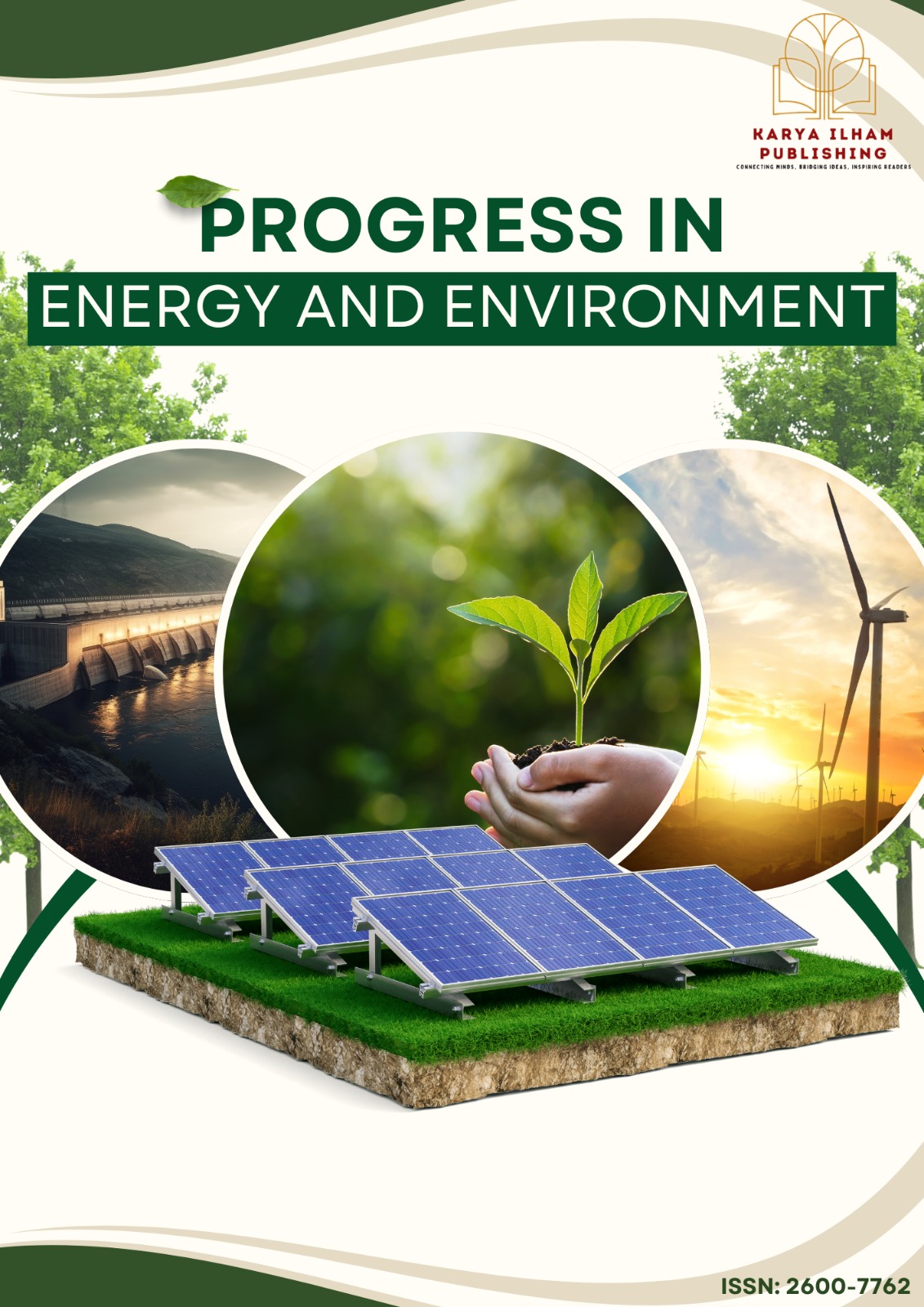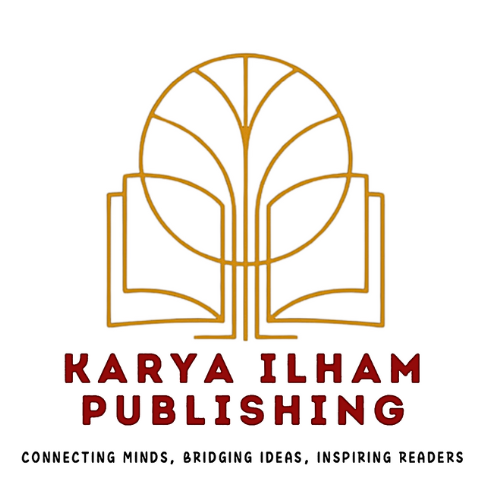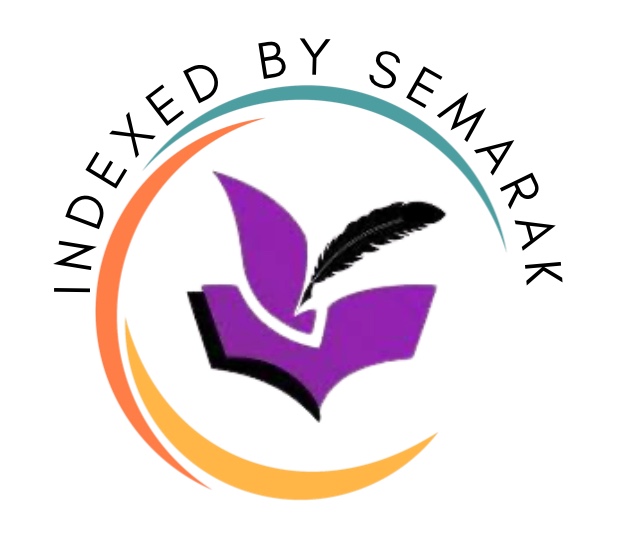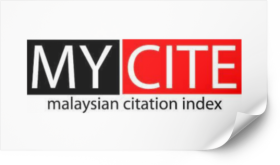Identification of Priority Criteria for the Advancement of Green Buildings for Commercial Buildings
Keywords:
Sustainable Buildings, Advancement, Green Buildings, Construction, Priority Criteria, Environmental FriendlyAbstract
Nowadays, one of the biggest worldwide problems is resource depletion and environmental damage. The construction industry has taken leading roles in energy conservation and emission reduction since buildings are the primary habitat for humans and are major sources of energy consumption and pollution emissions. In recent years, the concept of sustainability has drawn the interest of numerous disciplines. Green building (GB) is the fundamental element of sustainable development as it defines style of buildings designed and constructed by environmentally friendly principles. In this regard, this study draws attention to evaluating and addressing the most important topics: the priority criteria for advancing GB for commercial buildings. Therefore, to enhance and promote the development of green buildings, it is crucial to comprehend the factors that determine the successful application of green features to ensure that the obstacles during the construction process are overcome. The research identifies key criteria such as energy efficiency, material selection, water conservation, and indoor environmental quality through comprehensive literature reviews, surveys, and case studies. By analysing stakeholder perspectives, including architects, builders, and tenants, this research highlights the most impactful criteria for promoting green building initiatives. The findings offer valuable insights for policymakers, developers, and industry professionals, ultimately contributing to a more sustainable built environment. This study highlights the elements driving the acceptance of green buildings and barriers to their execution, providing valuable insights for stakeholders engaged in the ongoing discourse concerning green building development. Consequently, interested parties will better understand the factors affecting the priority criteria for the progression of green buildings in commercial buildings.
References
[1] J. Ayarkwa, D.-G.J. Opoku, P. Antwi-Afari, and R.Y.M. Li, Sustainable Building Processes’ Challenges and Strategies: The Relative Important Index Approach. Cleaner Engineering and Technology 7 (2022) 100455. https://doi.org/10.1016/j.clet.2022.100455.
[2] A. Sayigh, Sustainability, Energy and Architecture: Case Studies in Realizing Green Buildings, Academic Press, 2013.
[3] D. Ghai, K. Rawal, K. Dhir, and S.L. Tripathi, Artificial Intelligence Techniques for Sustainable Development, CRC Press, 2024
[4] K.M.K. Stepping, Environmental Sustainability, in: Social Indicators Research Series, 2019: pp. 187–206. https://doi.org/10.1007/978-3-030-05023-8_10.
[5] J.H.K. Lai, Mandatory Reporting of Greenhouse Gas Emissions from Buildings: Stakeholders’ Opinions in Hong Kong, Energy Policy 75 (2014) 278–288. https://doi.org/10.1016/j.enpol.2014.10.004.
[6] A. Jazeera, Malaysia Fastest Growing Polluter, Al Jazeera, 2007. https://www.aljazeera.com/news/2007/12/3/malaysia-fastest-growing-polluter.
[7] Home - Malaysia Energy Information Hub, (n.d.). https://meih.st.gov.my/.
[8] Q. Hassan, S. Algburi, A.Z. Sameen, H.M. Salman, and M. Jaszczur, A Review of Hybrid Renewable Energy Systems: Solar and Wind-Powered Solutions: Challenges, Opportunities, and Policy Implications. Results in Engineering 20 (2023) 101621. https://doi.org/10.1016/j.rineng.2023.101621.
[9] C. Debrah, A.P.C. Chan, and A. Darko, Artificial Intelligence in Green Building. Automation in Construction 137 (2022) 104192. https://doi.org/10.1016/j.autcon.2022.104192.
[10] C. Llatas, B. Soust-Verdaguer, and A. Passer, Implementing Life Cycle Sustainability Assessment during Design Stages in Building Information Modelling: From Systematic Literature Review to a Methodological Approach. Building and Environment 182 (2020) 107164. https://doi.org/10.1016/j.buildenv.2020.107164.
[11] Built Environment Plus, Inc., Home - Built Environment Plus, Built Environment Plus, 2025. http://www.usgbcma.org/GBResources.
[12] F. Çiner, and N. Doğan-Sağlamtimur, Environmental and Sustainable Aspects of Green Building: A Review. IOP Conference Series Materials Science and Engineering 706 (2019) 012001. https://doi.org/10.1088/1757-899x/706/1/012001.
[13] E.M. Elias, and C.K. Lin, The Empirical Study of Green Buildings (Residential) Implementation: Perspective of House Developers. Procedia Environmental Sciences 28 (2015) 708–716. https://doi.org/10.1016/j.proenv.2015.07.083.
[14] N. Frederiksen, L. Fredslund, and S.C. Gottlieb, The Hybridity of Strategic Partnerships and Construction Supply Chain Management, in: Emerald Reach Proceedings Series, 2019: pp. 77–83. https://doi.org/10.1108/s2516-285320190000002029.
[15] S. Evjen, G. Gunnerud, O. Lædre, R. Søfting, and J. Lohne, Sub-Contractors’ Perception of Contracting: the Case of Crime, in: Emerald Reach Proceedings Series, 2019: pp. 59–67. https://doi.org/10.1108/s2516-285320190000002059.
[16] L.N. Dwaikat, and K.N. Ali, Green Buildings Cost Premium: A Review of Empirical Evidence. Energy and Buildings 110 (2015) 396–403. https://doi.org/10.1016/j.enbuild.2015.11.021.
[17] R.J. Yang, P.X.W. Zou, and J. Wang, Modelling Stakeholder-Associated Risk Networks in Green Building Projects. International Journal of Project Management 34 (2015) 66–81. https://doi.org/10.1016/j.ijproman.2015.09.010.
[18] F.S. Hafez, B. Sa’di, M. Safa-Gamal, Y.H. Taufiq-Yap, M. Alrifaey, M. Seyedmahmoudian, A. Stojcevski, B. Horan, and S. Mekhilef, Energy Efficiency in Sustainable Buildings: A Systematic Review with Taxonomy, Challenges, Motivations, Methodological Aspects, Recommendations, and Pathways for Future Research. Energy Strategy Reviews 45 (2022) 101013. https://doi.org/10.1016/j.esr.2022.101013.
[19] Z. Yas, and K. Jaafer, Factors Influencing the Spread of Green Building Projects in the UAE. Journal of Building Engineering 27 (2019) 100894. https://doi.org/10.1016/j.jobe.2019.100894.
[20] L. Zheng, Research on the Application of Green Building in Building Design. IOP Conference Series Earth and Environmental Science 783 (2021) 012160. https://doi.org/10.1088/1755-1315/783/1/012160.
[21] Y. Li, L. Yang, B. He, and D. Zhao, Green Building in China: Needs Great Promotion. Sustainable Cities and Society 11 (2013) 1–6. https://doi.org/10.1016/j.scs.2013.10.002.
[22] C.S. Singh, Green Construction: Analysis on Green and Sustainable Building Techniques. Civil Engineering Research Journal 4 (2018). https://doi.org/10.19080/cerj.2018.04.555638.
[23] A.P.C. Chan, A. Darko, and E.E. Ameyaw, Strategies for Promoting Green Building Technologies adoption in the Construction Industry—An International Study. Sustainability 9 (2017) 969. https://doi.org/10.3390/su9060969.
[24] R. Ries, M.M. Bilec, N.M. Gokhan, and K.L. Needy, The Economic Benefits of Green Buildings: A Comprehensive Case study. The Engineering Economist 51 (2006) 259–295. https://doi.org/10.1080/00137910600865469.
[25] F.E.M. Ghazali, R. Zakaria, E. Aminudin, L.Y. Siang, G. Alqaifi, D.N. Abas, N.I. Abidin, and S.M. Shamsuddin, The Priority Importance of Economic Motivation Factors against Risks for Green Building Development in Malaysia. MATEC Web of Conferences 138 (2017) 02011. https://doi.org/10.1051/matecconf/201713802011.
[26] M.A.O. Mydin, Preliminary Studies on the Development of Lime-based Mortar with Added Egg White. International Journal of Technology 8 (2017) 800. https://doi.org/10.14716/ijtech.v8i5.442.
[27] A.M. Maglad, M.A.O. Mydin, S.D. Datta, and B.A. Tayeh, Assessing the Mechanical, Durability, Thermal and Microstructural Properties of Seashell Ash based Lightweight Foamed Concrete. Construction and Building Materials 402 (2023) 133018. https://doi.org/10.1016/j.conbuildmat.2023.133018.
[28] M.A. Tambichik, A.A.A. Samad, N. Mohamad, A.Z.M. Ali, M.A.O. Mydin, M.Z.M. Bosro, and M.A. Iman, Effect of Combining Palm Oil Fuel Ash (POFA) and Rice Husk Ash (RHA) as Pozzolan to the Compressive Strength of Concrete. International Journal of Integrated Engineering 10(8) (2018) 61–67. https://doi.org/10.30880/ijie.2018.10.08.004.
[29] S. Ganesan, M.A.O. Mydin, N.Md. Sani, AND A.I.C. Ani, Performance of Polymer Modified Mortar with Different Dosage of Polymeric Modifier. MATEC Web of Conferences 15 (2014) 01039. https://doi.org/10.1051/matecconf/20141501039.
[30] M. A. O. Mydin, N.S. Sahidun, M.Y.M. Yusof, and N.M. Noordin, Compressive, Flexural and Splitting Tensile Strengths of Lightweight Foamed Concrete with Inclusion of Steel Fibre. Jurnal Teknologi 75 (2015). https://doi.org/10.11113/jt.v75.4962.
[31] E. Serri, M.A. Othuman Mydin, and M.Z. Suleiman, The Influence of Mix Design on Mechanical Properties of Oil Palm Shell Lightweight Concrete. Journal of Materials and Environmental Science 6 (2015) 607–612.
[32] M.A.O. Mydin, Drywall Thermal Properties Exposed to High Temperatures and Fire Condition Jurnal Teknologi 62 (2013) 63–68. https://doi.org/10.11113/jt.v62.1369.
[33] N.S.S. Suhaili, N.M.A.O. Mydin, and N.H. Awang, Influence of Mesocarp Fibre Inclusion on Thermal Properties of Foamed Concrete. Journal of Advanced Research in Fluid Mechanics and Thermal Sciences 87 (2021) 1–11. https://doi.org/10.37934/arfmts.87.1.111.
[34] M.A.O. Mydin, M.F.M. Shajahan, S. Ganesan, and N.Md. Sani, Laboratory Investigation on Compressive Strength and Micro-structural Features of Foamed Concrete with Addition of Wood Ash and Silica Fume as a Cement Replacement. MATEC Web of Conferences 17 (2014) 01004. https://doi.org/10.1051/matecconf/20141701004.
[35] M.A.O. Mydin, M. Musa, and A.N.A. Ghani, Fiber Glass Strip Laminates Strengthened Lightweight Foamed Concrete: Performance Index, Failure Modes and Microscopy Analysis. AIP Conference Proceedings 2016 (2018) 020111. https://doi.org/10.1063/1.5055513.
[36] M.A.O. Mydin, N.Md. Noordin, N. Utaberta, M.Y.M. Yunos, and S. Segeranazan, Physical Properties of Foamed Concrete Incorporating Coconut Fibre. Jurnal Teknologi 78 (2016) 99–105. https://doi.org/10.11113/jt.v78.8250.
[37] M.A.O. Mydin, Modeling of Transient Heat Transfer in Foamed Concrete Slab. Journal of Engineering Science and Technology 8(3) (2013) 326–343.
[38] M.A.O. Mydin, Thin-Walled Steel Enclosed Lightweight Foamcrete: A Novel Approach to Fabricate Sandwich Composite. Australian Journal of Basic and Applied Sciences 5 (2011) 1727–1733.
[39] M.A.O. Mydin, N.M. Sani, and A.F. Phius, Investigation of Industrialised Building System Performance in Comparison to Conventional Construction Method. MATEC Web of Conferences 10 (2014) 04001. https://doi.org/10.1051/matecconf/20141004001.
[40] M.A.O. Mydin, P. Jagadesh, A. Bahrami, A. Dulaimi, Y.O. Özkılıç, M.M.A.B. Abdullah, and R.P. Jaya, Use of Calcium Carbonate Nanoparticles in Production of Nano-Engineered Foamed Concrete. Journal of Materials Research and Technology 26 (2023) 4405–4422. https://doi.org/10.1016/j.jmrt.2023.08.106.
[41] M.A.O. Mydin, N.M. Zamzani, and A.N.A. Ghani, Effect of Alkali-Activated Sodium Hydroxide Treatment of Coconut Fiber on Mechanical Properties of Lightweight Foamed Concrete. AIP Conference Proceedings 2016 (2018) 020108. https://doi.org/10.1063/1.5055510.
[42] A.M.J. Esruq-Labin, A.I. Che-Ani, N.M. Tawil, M.N.M. Nawi, and M.A.O. Mydin, Criteria for Affordable Housing Performance Measurement: A Review. E3S Web of Conferences 3 (2014) 01003. https://doi.org/10.1051/e3sconf/20140301003.
[43] M.A.O. Mydin, J.C. Khor, and N.Md. Sani, Approaches to Construction Waste Management in Malaysia. MATEC Web of Conferences 17 (2014) 01014. https://doi.org/10.1051/matecconf/20141701014.
[44] M. Alyami, M.A.O. Mydin, A.M. Zeyad, S.S. Majeed, and B.A. Tayeh, Influence of Wastepaper Sludge Ash as Partial Cement Replacement on the Properties of Lightweight Foamed Concrete. Journal of Building Engineering 79 (2023) 107893. https://doi.org/10.1016/j.jobe.2023.107893.
[45] M.A.O. Mydin, N.A. Rozlan, N.Md. Sani, and S. Ganesan, Analysis of Micro-Morphology, Thermal Conductivity, Thermal Diffusivity and Specific Heat Capacity of Coconut Fibre Reinforced Foamed Concrete. MATEC Web of Conferences 17 (2014) 01020. https://doi.org/10.1051/matecconf/20141701020.
[46] A.M. Maglad, M.A.O. Mydin, S.S. Majeed, B.A. Tayeh, and S.A. Mostafa, Development of Eco-Friendly Foamed Concrete with Waste Glass Sheet Powder for Mechanical, Thermal, and Durability Properties Enhancement. Journal of Building Engineering 80 (2023) 107974. https://doi.org/10.1016/j.jobe.2023.107974.
[47] M. A. O. Mydin, and N.M. Zamzani, Coconut Fiber Strengthen High Performance Concrete: Young’s Modulus, Ultrasonic Pulse Velocity and Ductility Properties. International Journal of Engineering & Technology 7 (2018) 284. https://doi.org/10.14419/ijet.v7i2.23.11933.
[48] A.M. Maglad, M.A.O. Mydin, R.C. Kaze, I.S. Abbood, and B.A. Tayeh, Synergistic Effect of Waste Gypsum Plasterboard and Fly Ash as Partial Cement Replacement on Fresh-State, Microstructural, Mechanical and Transport Properties of Foamed Concrete. Construction and Building Materials 463 (2025) 140079. https://doi.org/10.1016/j.conbuildmat.2025.140079.
[49] M. Alharthai, M.A.O. Mydin, R.C. Kaze, S.S. Majeed, and B.A. Tayeh, Properties of Ultra Lightweight Foamed Concrete Utilizing Agro Waste Ashes as an Alkaline Activated Material. Journal of Building Engineering 90 (2024) 109347. https://doi.org/10.1016/j.jobe.2024.109347.
[50] M.A.O. Mydin, M.M.A.B. Abdullah, N.H. Sor, R. Omar, A. Dulaimi, P.O. Awoyera, F. Althoey, and A.F. Deifalla, Thermal Conductivity, Microstructure and Hardened Characteristics of Foamed Concrete Composite Reinforced with Raffia Fiber. Journal of Materials Research and Technology 26 (2023) 850–864. https://doi.org/10.1016/j.jmrt.2023.07.225.
[51] M.A.O. Mydin, M.N.M. Nawi, O. Mohamed, and M.W. Sari, Mechanical Properties of Lightweight Foamed Concrete Modified with Magnetite (Fe3O4) Nanoparticles, Materials 15 (2022) 5911. https://doi.org/10.3390/ma15175911.
[52] M. Musa, M. A. O. Mydin, and A.N.A. Ghani, Influence of Oil Palm Empty Fruit Bunch (EFB) Fibre on Drying Shrinkage in Restrained Lightweight Foamed Mortar. International Journal of Innovative Technology and Exploring Engineering 8 (2019) 4533–4538. https://doi.org/10.35940/ijitee.j1080.0881019.
[53] M.A.O. Mydin, S. Ganesan, M.Y.M. Yunos, N. Utaberta, and N.A. Ismail, Structural Behaviour of Coir Fibre-Reinforced Foamed Concrete Wall Panel System. Jurnal Teknologi 78 (2016) 169–177. https://doi.org/10.11113/jt.v78.8276.
[54] M.A.O. Mydin, N.A. Othman, and N.Md. Sani, A Prospective Study on Building Quality: Relationship between Workmanship Quality and Common Building Defects of Low-cost Construction Projects. MATEC Web of Conferences 17 (2014) 01001. https://doi.org/10.1051/matecconf/20141701001.
[55] S.S. Majeed, M.A.O. Mydin, A. Bahrami, A. Dulaimi, Y.O. Özkılıç, R. Omar, and P. Jagadesh, Development of Ultra-Lightweight Foamed Concrete Modified with Silicon Dioxide (SiO2) Nanoparticles: Appraisal of Transport, Mechanical, Thermal, and Microstructural Properties. Journal of Materials Research and Technology 30 (2024) 3308–3327. https://doi.org/10.1016/j.jmrt.2024.01.282.
[56] M.A.O. Mydin, N.H. Sor, F. Althoey, Y.O. Özkılıç, M.M.A.B. Abdullah, H.F. Isleem, A.F. Deifalla, and T.A. Tawfik, Performance of Lightweight Foamed Concrete Partially Replacing Cement with Industrial and Agricultural Wastes: Microstructure Characteristics, Thermal Conductivity, and Hardened Properties. Ain Shams Engineering Journal 14 (2023) 102546. https://doi.org/10.1016/j.asej.2023.102546.
[57] M.A.O. Mydin, The Effect of Raw Mesocarp Fibre Inclusion on the Durability Properties of Lightweight Foamed Concrete. ASEAN Journal on Science and Technology for Development 38 (2021) Article 2. https://doi.org/10.29037/ajstd.685.
[58] M.A.O. Mydin, N. Sarpin, R.M. Zainol, R. Odeh, and M.N.M. Nawi, The Impact of Climatological Factors on the Multifaceted and Multisystemic Deficiencies of Building Anatomy. Journal of Advanced Research in Applied Sciences and Engineering Technology 50 (2024) 308–329. https://doi.org/10.37934/araset.50.1.308329.
[59] A. Dulaimi, Q.S. Banyhussan, J. Abdulrazzaq, M.A.O. Mydin, A. Al-Bdairi, and R.R.A. Almuhanna, Effect of Water Content and Degree of Compaction of Clay Subgrade Soil on the Interface Shear Strength using Geogrid. Journal of Advanced Research in Applied Sciences and Engineering Technology (2024) 262–280. https://doi.org/10.37934/araset.52.2.262280.
[60] M.A.O. Mydin, A.I.C. Ani, A. Dulaimi, M.N.M. Nawi, and R. Omar, Assessing the Effects of Insect Attacks on Buildings and Practical Corrective Measures. Journal of Advanced Research in Applied Sciences and Engineering Technology 50 (2024) 1–17. https://doi.org/10.37934/araset.50.1.117.
[61] N.F. Zahari, M.A. Bakar, S.D.M. Wahid, and M.A.O. Mydin, Implementation of Quality Management System for Historical Building Conservation. MATEC Web of Conferences 15 (2014) 01027. https://doi.org/10.1051/matecconf/20141501027.
[62] M.A.O. Mydin, N.H. Ja’afar, N. Norazman, M.A. Zaidi, and M.N.M. Nawi, Appraisal of the Aetiology and Pathology of Soil Settlement-Related Building Defects and Failures. Journal of Advanced Research in Applied Sciences and Engineering Technology 50 (2024) 286–307. https://doi.org/10.37934/araset.50.1.286307.
[63] P. Arokiasamy, M.M.A.B. Abdullah, E. Arifi, N.H. Jamil, M.A.O. Mydin, S.Z.A. Rahim, A.V. Sandu, and S. Ishak, Sustainable Geopolymer Adsorbents Utilizing Silica Fume as a Partial Replacement for Metakaolin in the Removal of Copper Ion from Synthesized Copper Solution. Case Studies in Construction Materials 22 (2024) e04142. https://doi.org/10.1016/j.cscm.2024.e04142.
[64] A.M. Maglad, M.A.O. Mydin, R.C. Kaze, I.S. Abbood, and B.A. Tayeh, Synergistic Effect of Waste Gypsum Plasterboard and Fly Ash as Partial Cement Replacement on Fresh-State, Microstructural, Mechanical and Transport Properties of Foamed Concrete. Construction and Building Materials 463 (2025) 140079. https://doi.org/10.1016/j.conbuildmat.2025.140079.
[65] S. Shahari, M.F. Ghazli, M.M.A.B. Abdullah, T.C. Lih, M.A.O. Mydin, M.S. Osman, V.T. Le, and M.F.M. Tahir, A Comparative Study on Effects of Fly Ash and Fly Ash based Geopolymer on the Fire and Mechanical Properties of Glass Fibre Reinforced Epoxy Composite. Construction and Building Materials 457 (2024) 139434. https://doi.org/10.1016/j.conbuildmat.2024.139434.
[66] M.A.O. Mydin, P. Jagadesh, A. Bahrami, S.S. Majeed, A. Dulaimi, and R. Omar, Study on Fresh and Hardened State Properties of Eco-Friendly Foamed Concrete Incorporating Waste Soda-Lime Glass. Scientific Reports 14 (2024) 18733. https://doi.org/10.1038/s41598-024-69572-4.
[67] A.A. Sattar, M.A.O. Mydin, and M. Shahadat, Developing Innovative Nano-Engineered Lightweight Foamed Concrete Incorporating Iron Oxide (II, III) with Enhanced Mechanical and Transport Properties, Journal of Advanced Research Design 122 (2024) 8–26. https://doi.org/10.37934/ard.122.1.826.
[68] M.A.O. Mydin, Study on the Engineering Properties of Lightweight Foamed Concrete Modified with Palm Stalk Fiber as an Additive. Journal of Advanced Research Design 121 (2024) 11–21. https://doi.org/10.37934/ard.121.1.1121.
[69] M.A.O. Mydin, R. Omar, M.N.M. Nawi, W.N.W. Ismail, and N. Norazman, Identifying and Categorizing Building Defects and Failures Caused by Overloading. Journal of Advanced Research in Applied Mechanics 122 (2024) 186–204. https://doi.org/10.37934/aram.122.1.186204.
[70] M.A.O. Mydin, The Potential Use of Palm Frond Fibre on the Mechanical Performance of Lightweight Foamed Concrete. Journal of Advanced Research Design 120 (2024) 36–46. https://doi.org/10.37934/ard.120.1.3646.
[71] M.A.O. Mydin, A.I.C. Ani, N.F.A.N. Yahya, N.Y.@ Ya’acob, and M.N.M. Nawi, The Influence of Impact and Explosion as Agents of Defects on the Structural Integrity of Buildings. Journal of Advanced Research in Applied Mechanics 121 (2024) 222–238. https://doi.org/10.37934/aram.121.1.222238.
[72] M.A.O. Mydin, M.N.M. Nawi, R. Omar, M.A. Khadimallah, I.M. Ali, and R. Deraman, The Use of Inorganic Ferrous–Ferric Oxide Nanoparticles to Improve Fresh and Durability Properties of Foamed Concrete. Chemosphere 317 (2023) 137661. https://doi.org/10.1016/j.chemosphere.2022.137661.
[73] M. A. O. Mydin, Effect of Silica Fume and Wood Ash Additions on Flexural and Splitting Tensile Strength of Lightweight Foamed Concrete. Jurnal Teknologi 74 (2015) 125–129. https://doi.org/10.11113/jt.v74.3653.
[74] M.A.O. Mydin, M.N.M. Nawi, R.A. Odeh, and A.A. Salameh. Durability Properties of Lightweight Foamed Concrete Reinforced with Lignocellulosic Fibers. Materials 15 (2022) 4259. https://doi.org/10.3390/ma15124259.
[75] A.M. Serudin, M.A.M. Othuman, and A.N.A. Ghani, Effect of Lightweight Foamed Concrete Confinement with Woven Fiberglass Mesh on its Drying Shrinkage. Revista De Ingeniería De ConstruccióN 36 (2021) 21–28. https://doi.org/10.4067/s0718-50732021000100021.
[76] A.M. Serudin, M.A.O. Mydin, and A.N.A. Ghani, Influence of Fibreglass Mesh on Physical Properties of Lightweight Foamcrete. IIUM Engineering Journal 22 (2021) 23–34. https://doi.org/10.31436/iiumej.v22i1.1446.
[77] T.S. Jing, M.A.O. Mydin, and N. Utaberta, Appraisal of Moisture Problem of Inheritance Building Envelope Assemblies via Visible and Infrared Thermography Methods. Jurnal Teknologi 75 (2015) 1–6. https://doi.org/10.11113/jt.v75.4951.

Downloads
Published
Issue
Section
License
Copyright (c) 2025 Progress in Energy and Environment

This work is licensed under a Creative Commons Attribution-NonCommercial 4.0 International License.











